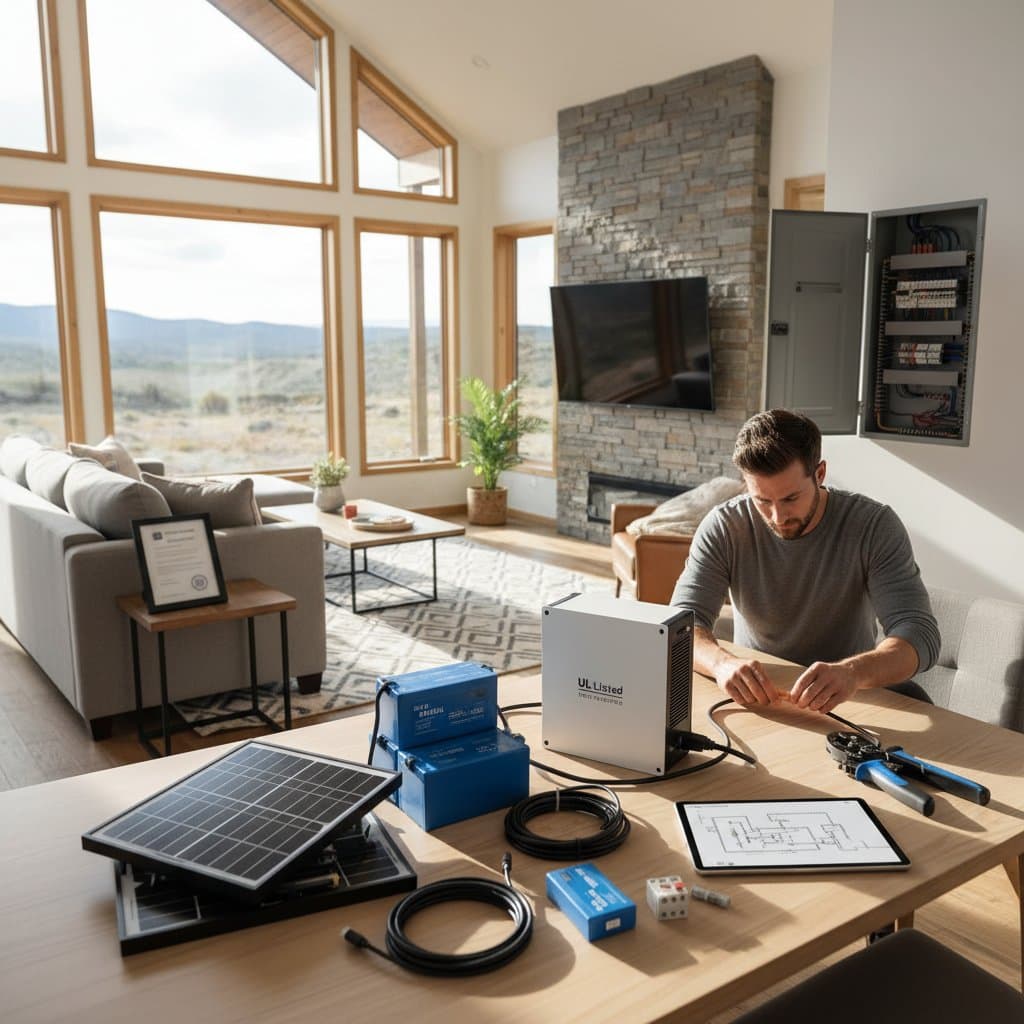DIY Solar Kits Under $5K for Legal Off-Grid Living
Understanding Off-Grid Solar Power
Off-grid living offers freedom from utility bills and grid dependency. Individuals choose this lifestyle for remote cabins, RVs, or small homes in areas without reliable electricity. A well-designed solar system provides consistent power while adhering to safety standards.
Modern DIY kits make this transition accessible. These systems rely on photovoltaic panels, batteries, and inverters to convert sunlight into usable electricity. For budgets under $5,000, focus on efficient, scalable components that meet daily energy needs without excess.
Key Components of a DIY Solar Kit
Every effective solar kit includes solar panels, a charge controller, batteries, and an inverter. Solar panels capture sunlight and generate direct current electricity. Charge controllers regulate the flow to prevent battery overcharging, while inverters convert direct current to alternating current for household appliances.
Batteries store excess energy for nighttime or cloudy days. Lithium-ion options offer longevity and efficiency over lead-acid alternatives. Select UL-listed components to ensure compatibility and safety in off-grid setups.
- Solar Panels: Monocrystalline types provide high efficiency in limited space.
- Charge Controller: MPPT models maximize energy harvest from panels.
- Batteries: Deep-cycle lithium batteries support frequent discharges.
- Inverter: Pure sine wave units deliver clean power for sensitive electronics.
Sizing Your Solar System
Determine your energy needs by calculating daily watt-hour consumption. List appliances, their wattage, and usage hours to find the total. For example, a small cabin might require 2,000 to 3,000 watt-hours per day for lights, refrigeration, and charging devices.
Factor in location and sunlight availability. In Philadelphia or similar climates, expect 4 to 5 peak sun hours daily. Divide total watt-hours by sun hours to size panels, then double capacity for battery storage to cover two days of autonomy.
A basic system for minimal needs might include four 100-watt panels, a 1,000-watt inverter, and 200 amp-hours of battery storage. This setup powers essentials under $5,000 while allowing room for expansion.
Step-by-Step Installation Guide
Preparation begins with site assessment. Choose a south-facing, unshaded location for panels to optimize exposure. Secure mounting hardware on roofs or ground racks, ensuring stability against wind and weather.
Connect panels in series or parallel based on voltage requirements. Wire the positive and negative leads to the charge controller, then link to batteries. Finally, attach the inverter to batteries and outlets for appliance connections.
Professional electricians recommend grounding all components to prevent shocks. Test the system incrementally: first panels to controller, then full circuit. This methodical approach minimizes errors and ensures safe operation.
- Mount panels securely.
- Install charge controller indoors.
- Connect batteries in a ventilated area.
- Wire inverter and perform safety checks.
- Monitor initial output for adjustments.
Navigating Legal and Code Compliance
Off-grid systems must comply with local building codes and electrical standards. In most U.S. states, including Pennsylvania, installations require permits if connected to structures. UL certification on components simplifies approval processes.
Consult the National Electrical Code for wiring and grounding rules. Some jurisdictions mandate inspections for battery storage to address fire risks. For RVs, adhere to RVIA standards to maintain insurability.
Legal off-grid living avoids fines by documenting compliance. Keep records of purchases, installations, and inspections. This paperwork supports energy independence without regulatory conflicts.
Cost-Saving Strategies for Under $5K
Shop for bundled kits from reputable suppliers to reduce expenses. Look for sales on UL-listed panels and inverters, often available online or at renewable energy stores. Reuse existing wiring or appliances to cut additional costs.
Opt for expandable systems that start small and grow. A $3,000 kit covers basics, leaving budget for batteries or monitors. Tax credits like the federal solar investment credit can offset up to 30% of costs, though eligibility varies.
Compare lithium versus lead-acid batteries for long-term savings. Lithium units cost more upfront but last longer, reducing replacement needs. Efficient appliances, such as LED lights, lower overall system sizing requirements.
Maintenance for Long-Term Reliability
Regular upkeep extends system life and performance. Clean panels monthly to remove dust and debris, especially after rain. Inspect connections quarterly for corrosion or loose wires.
Monitor battery health with built-in indicators or voltmeters. Charge batteries fully during peak sun periods to maintain capacity. Replace fuses promptly to avoid disruptions.
Annual professional reviews catch issues early. Track energy production logs to identify inefficiencies. Proper care ensures the system operates reliably for 20 years or more.
Realizing Sustainable Energy Independence
Investing in a DIY solar kit under $5,000 empowers off-grid living with confidence. These systems deliver clean, renewable power tailored to personal needs. Embrace this step toward self-sufficiency, reducing environmental impact while enhancing resilience.
Future advancements promise even greater affordability and efficiency. Start small, scale thoughtfully, and enjoy the benefits of uninterrupted energy in 2025 and beyond.
